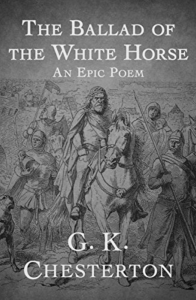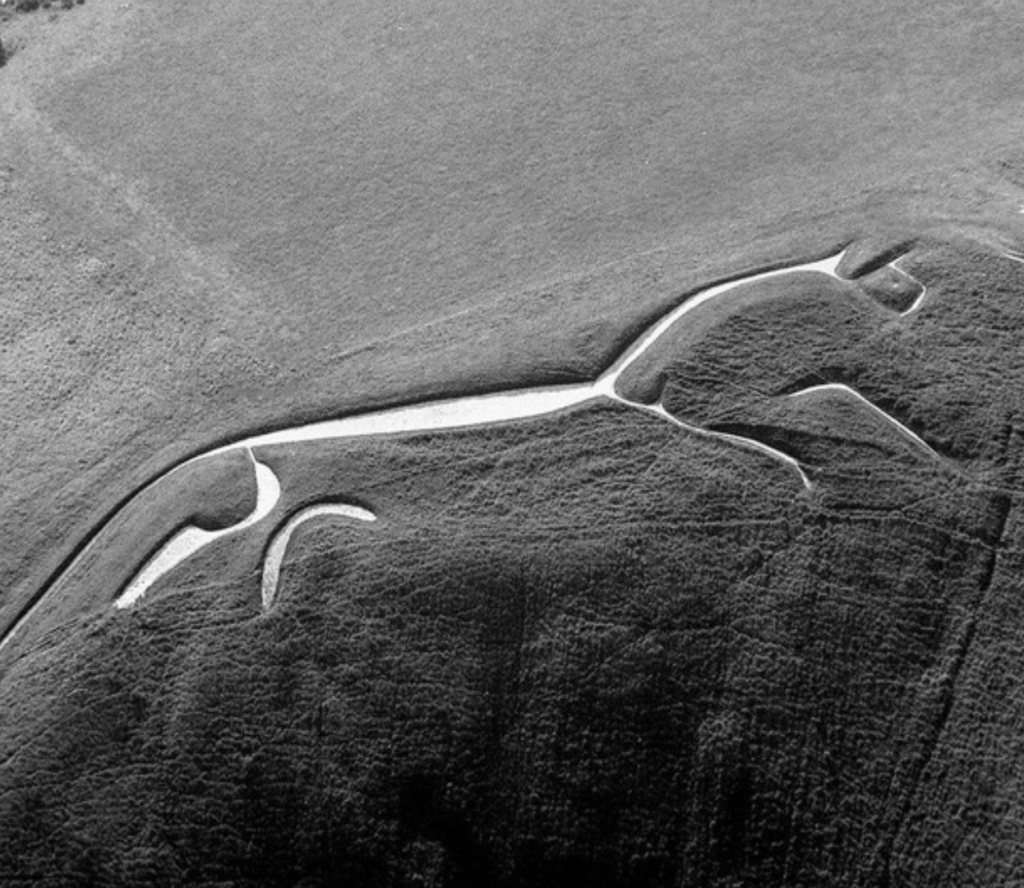Chesterton’s narrative poem, The Ballad of the White Horse, has long occupied a place of inspirational importance in his works. Published in 1911, it honoured the Christian King Alfred’s victory in 9th century England over the pagan Danish invaders.

While the poem is the story of an historic victory, it has a deeper and long-term significance, which is found in the imaginative energy it gave to the story of England. It evoked the historical character of Chesterton’s own country, as this was shown again and again in its overcoming of darkness and defeat.
During World War I, The Ballad was a favourite of many soldiers desperate for hope in the mud and misery of the trenches. In World War II, it was sufficiently well-known to be cited, at critical moments in the six-year conflict, in the editorials of the London Times.
In May 1941, for example, two of the poem’s most memorable stanzas, beginning “I tell you naught for your comfort”, were used by The Times after the Allies faced the disastrous loss of the island of Crete.
In November 1942, the phrase, “The high tide and the turn”, was cited in an editorial celebrating the first British victory of the war in El Alamein.
In the 9th century, England was a land that could have been lost. It faced a similar fate more than once in the 20th century. The Ballad of the White Horse was Chesterton’s poetic answer to defeat – and the expression of a legend never to be forgotten.
The White Horse – historic and eternal
Great significance attached to the title of the poem. The symbol of a “white horse” had enlivened Chesterton’s imagination ever since childhood. In the poem he picked, for the scene of King Alfred’s victory, the valley of Berkshire in southern England for its historic value (and not far, as it happened, from the town of Beaconsfield where he lived).
But Chesterton was also conscious of its prehistoric importance. Since ancient times, a huge white horse had been inscribed on the side of a valley in Berkshire – symbolising, as the late Fr Ian Ker noted, an eternal England.
The image of a white horse also had a special association for Chesterton’s wife, Frances. Their honeymoon began in the English town of Ipswich, under the sign of the hotel, the Great White Horse. It was an experience Chesterton described as “a trip to fairyland”.
Frances closely watched the development of The Ballad over many years – and he dedicated it to her in the opening verses. As Fr John O’Connor, the model for Chesterton’s character of Father Brown, recalled, “she was more in love with it than with anything else he had in hand.”
In a creative burst he completed the poem in two weeks. She gathered the sheets as they dropped from his desk. She found it remarkable that he scarcely made a single correction when she read the work in its final form.
In a recent article on The Ballad (London Church Times, September 2, 2022), the English poet and singer-songwriter, Malcolm Guite, suggested that the dedicatory verses to Frances were of crucial importance – both in illustrating Chesterton’s understanding of the value of legends in capturing a cultural tradition, and of finding a way to convey it to new generations.
We may then ask – can these legends and stories still possess power in the 21st century?
Historical images and the understanding of time
Guite quotes Chesterton’s reference in his poem to “seven sunken Englands/ Lie buried one by one,” and he compares Chesterton’s overlaying of historical images with the Welsh poet David Jones’s conception of time.
Guite recalls an insight of the former Anglican Archbishop of Canterbury, Rowan Williams, who believed that Jones saw time, not as “a succession of streaming moments each carrying everything away irrevocably into the past,” but as “a series of layers richly accumulating over the same patch of ground, the same city or valley or hamlet. . . . All these layers of history and legend are still there, ready to be woken and evoked by the poet, ready to be made present again, and to give us a much fuller and more nuanced sense of who and where we are.”
“The England of that dawn remains,” as Chesterton affirmed of Alfred’s victory. The layers of the past were not lost, but rather, buried – and recoverable.
Entering the past imaginatively
At a time when cultural amnesia has banished our sense of a living continuity with the past – and, as a result, our sense of grounded meaning and historical identity – Malcolm Guite’s comments are enlightening.
He argues that The Ballad can open our eyes to the power of a tradition, despite the cultural changes that have swept it out of sight. What is required is that we try to enter imaginatively into the world of our forebears, and rediscover the spiritual belief, entwined in cultural memory, that they so deeply cherished.

If we can see the world, as Guite points out, “in the light of the cross and resurrection, then we can, indeed, see as they saw.”
In a closing stanza of his dedicatory verse, Chesterton looks at the pendant cross Frances is wearing. Only by the light it projects – the light of Christ’s sacrifice that gave promise of resurrection and redemption – that we have any basis of hope:
Lady, by one light only
We look from Alfred’s eyes,
We know he saw athwart the wreck The sign that hangs about your neck, Where One more than Melchizadek Is dead and never dies.
The Ballad of the White Horse continues to exert an impact at two levels. Firstly, it shows how a legend can capture the meaning of an historical event story and hold a truth to fortify a culture.
Secondly, it makes clear that the greatest stories are about a spiritual battle.
In the case of Chesterton’s King Alfred epic, it was a battle to preserve a Christian civilisation, not as a quaint memory, but as a continuing carrier of faith – and to spur a new generation to fight for its preservation as well.
The Ballad of the White Horse reveals the power of a tradition when it is not confined to historical events but is a reminder of another world – and speaks of eternal things.
